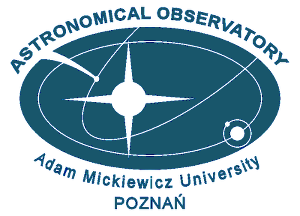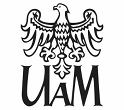History
The history of the Astronomical Observatory in Poznań dates back to 1906, when a rector of Prussian Royal Academy in Poznań (Königliche Akademie zu Posen) offered doctor Kazimierz Graff the organization of an Observatory in Poznań. At that time Graff worked in Hamburg-Bergedorf Observatory and did not accept the proposition, but offered his help in purchasing necessary equipment. After Poland regained its independence, the equipment was transferred to the Physics Department of the newly created University of Poznań. In 1919 Heliodor Święcicki, the rector of Poznań University, offered professor Kazimierz Graff the position of the head of University’s Astronomical Observatory. This time Graff accepted the offer at that time, he actively participated in establishing the observatory. He ordered or bought the necessary observing instruments and books. He also decided to purchase Villa Górczyn in the south suburbs of Poznań, which became the property of Poznań University in 1920 and remains the main observatory building till today.
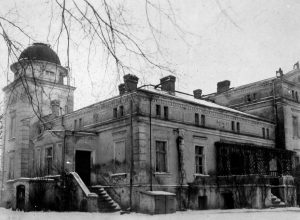
Kazimierz Graff also suggested to build an observing station outside the city, about 30 km south from Poznań, but these plans were never realized.
The problems created by the Polish-Soviet war in 1920 and new prospects in Hamburg-Bergedorf as well as deteriorating situation of the Poznań University (inability to provide a good salary) did not allow Graff to start regular work in Poznań. Although he resigned from the position of the director of Poznań Observatory, for many years he remained in touch helping and supporting his successor.
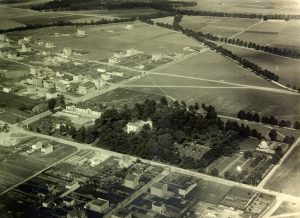
At the end of 1921 prof. Tadeusz Banachiewicz from the Astronomical Observatory of Jagiellonian University in Cracow recommended a young astronomer Bohdan Zaleski (from Nikolajev Observatory, currently Ukraine) for the position of the head of Poznań Observatory. Even though he did not even have a PhD in astronomy, Zaleski got the position of vice-professor and officially took over his duties on January 15th, 1922. Studies in astronomy started the same year and 5 students have been admitted. Zaleski specialized in astrometry. With the help of his students he installed new facilities, including a transit instrument, a Repsold meridian circle and a Steinheil refractor. He determined coordinates of the observatory and obtained his PhD degree in Cracow in 1923 and habilitation in 1926. After Zaleski’s sudden death in 1927 (because of tuberculosis) the Observatory was practically (although informally) directed by Stanisław Andruszewski, the first astronomy graduate of the University, who introduced time signals to the Polish Radio station in Poznań.
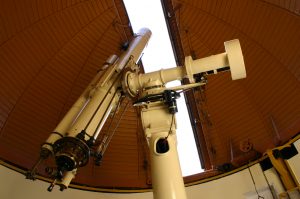
In 1929 professor Józef Witkowski became the new head of the Poznań Observatory. A floor was added to the main building, a pavilion was built for the Zeiss refractor (200/3000 mm) and the Rieffler astronomical clock was purchased. Both instruments originated from the private Władysław Szaniawski observatory in Przegaliny near Lublin. The purchase of Shortt electromechanical clock no. 30 (the second one in Poland, after no. 14 which was already installed in Warsaw) allowed for the highest level of time-keeping accuracy available at that time. With the new equipment systematic astrometric observations of comets, asteroids and eclipsing binary stars were started. The observatory participated in two international longitude campaigns in 1929 and 1933. In 1934, an expedition from the Observatory observed the solar eclipse in Irkutsk (Siberia) using a chromocinematographic technique. The visual photometric observations of Nova Herculis and the theoretical research in celestial mechanics marked the origin of new domains which have finally become new specialties of the Observatory.
During the Second World War, the Observatory – taken over by German staff – continued scientific activities. The head of the Observatory became Joachim Otto Stobbe, who specialized in photometry and shape modelling of asteroids (he was a pioneer in photometric observations of 433 Eros). Joachim Stobbe died in 1943 in Berlin and his successor became Heinrich Fischer.
In 1945 most of the previous staff returned to the Observatory. Prof. J. Witkowski became (again) the director and kept this function until his retirement in 1962. New cameras and a Zeiss photographic plate measuring device were installed and systematic photographic astrometry of asteroids and comets was undertaken. Other new domains were observations of stellar occultations by the Moon and theoretical studies of the evolution of comets. Witkowski also proposed the establishment of the Astronomical Latitude Station (ALS) of the Polish Academy of Sciences in Borowiec near Kórnik (the place was chosen because of the cooperation with Irkutsk, which has the same latitude as Borowiec and differs by 90 degrees in longitude). Witkowski was also the leader of the Department of Astronomy of the Polish Academy of Sciences and the president of the Polish Astronomical Society, as well as a member of PAU, the International Astronomical Union and the Royal Astronomical Society.
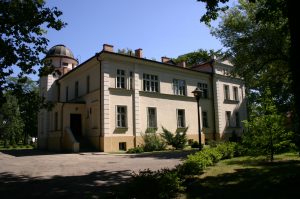
After Witkowski’s retirement, another director of the Observatory became professor Fryderyk Koebcke. During the years of his leadership (1962-1967) a research on artificial Earth’s satellites was significantly developed, visual observations of satellites were replaced by photographic techniques, serving the purpose of satellite geodesy, and the theoretical studies of satellite motion started.
Professor Hieronim Hurnik succeeded F. Koebcke in 1967. The ALS in Borowiec became the site for observations of artificial satellites continued by a joint group of the Observatory and the Polish Academy of Sciences, using a Zeiss SBG camera and Intercosmos laser ranging device. A new second generation laser ranging instrument for ALS was designed and built under the direction of professor Hurnik. The Observatory participated in international cooperation in space research and the studies of Morasko meteorite and lunar problems. The traditional observations of asteroids were extended by long-focus astrometry for determination of the Equinox point and short-focus cameras were replaced by a 300/1500 mm astrograph constructed in the Observatory. Astronomical refraction of the atmosphere was studied. Celestial mechanics was developed significantly, mostly in the domains of satellite motion theory and cometary evolution.
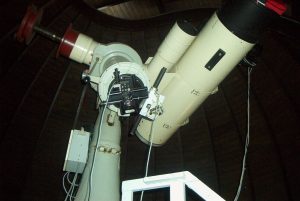
Photometric observations of asteroids complemented theoretical studies on physical properties of these bodies. In the late 1980s Tadeusz Michałowski established an asteroid working group, which continues studies in the field of asteroids to this day.
In 1990 professor Krystyna Kurzyńska became the head of the Observatory. The end of 1980s marked the decline of photographic observations in astronomy. The Observatory met the challenge of adopting CCD techniques. To escape from the light pollution in the expanding city of Poznań, the new 400 mm Newtonian photometric telescope with CCD camera was installed in a new dome in Borowiec. Theoretical studies constantly focused mainly on the dynamics and physical properties of the small bodies of the Solar System, as well as on the theory of motion of Earth’s artificial satellites. This traditional field of interest was extended in the 1990s to astrophysics.
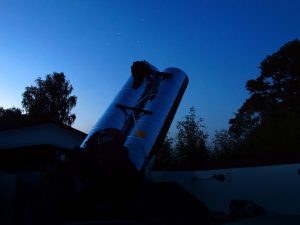
In 1993 professor Aleksander Schwarzenberg-Czerny joined the staff of the Observatory and organized a new group working on stellar astrophysics. He initiated the construction of a new instrument – Poznań Spectroscopic Telescope (PST1) – a “binocular” Newton reflector (2 x 0.5m), equipped with a high resolution echelle spectrograph (the first such instrument in Poland). Both the telescope and the spectrograph were built by engineer Roman Baranowski at the Observatory’s workshop. PST1 is still operational in Borowiec, observing in remote mode.
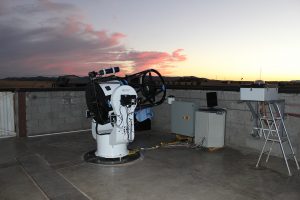
Professor Edwin Wnuk became the head of the Observatory in 1996. During 20 years of his leadership, the research on celestial mechanics was continued (the origin and orbital evolution of comets, dynamics of the artificial satellites and space debris), as well as photometry, spectroscopy and asteroid shapes modelling, and stellar astrophysics (photometry and spectroscopy of pulsating and multiple stars). Poznań Observatory also joined a consortium, which has built the South African Large Telescope (SALT). Several observing campaigns mostly connected to photometry and spectroscopy of asteroids, were carried out at SALT by Poznań astronomers. The second, fully robotic, 0.7m telescope dedicated to spectroscopy, but used also for photometry and astrometry (PST2) was installed in Winer Observatory (Sonoita Arizona, USA) in 2013. PST1 and PST2 form The Global Astrophysical Telescope System (GATS).
The current staff of the Astronomical Observatory Institute consists of 38 people: scientists, PhD students, administration and service workers. Since September 2016 prof. Agnieszka Kryszczyńska is the director of the Observatory.
